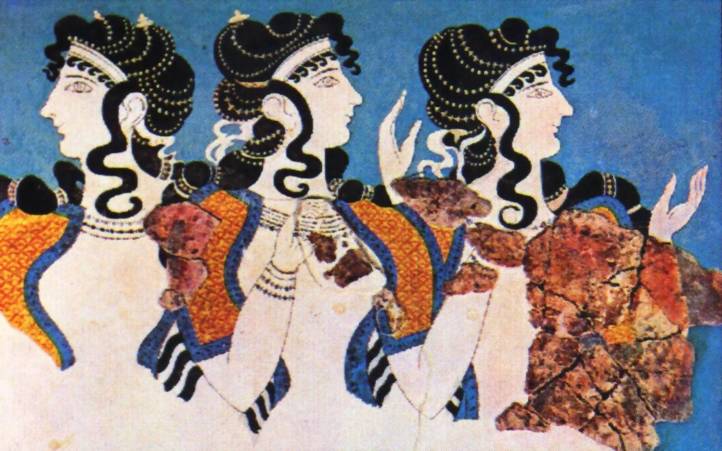Women have been belittled and relegated to second-class position throughout all of written history except for brief inspired periods in isolated pockets (often when the gospel has been present on the earth). Our common mother, Eve, has been misconstrued in every context, and those misinterpretations of her character have been generalized for the entire female sex. From the ancient world until today, a lower position of women has been enforced either physically or through socialization.
Men have always taken control of politics, society and religion. Perhaps due to their larger size and the fact that women were often immobilized by pregnancy and child care, men have been able to rule over women. “Claude Levi-Strauss, an anthropologist, stated: ‘Public or simply social authority always belongs to men.’ The myth of earlier societies of dominant women, Amazons or mother-rulers, has a long standing. But it remains a myth; all that anthropology has been able to conclude is that matriarchies have indeed existed, but this doesn’t mean that women were dominant in such societies, only that descent and inheritance were figured from the mother, an outcome, presumably, of early man’s ignorance of his own role in procreation.”[i]
One of the few examples of women holding a respectable position in society occurred in the Minoan civilization. This group of people lived on the island of Crete from 2000 – 1500 B.C. Women had an esteemed position in their society, due to the fact that they worshiped female deities. Because their goddesses were so powerful and valued, women shared in equal treatment in society and participated freely in public life, something that would not be allowed again until the 20th century A.D. One fact about their culture that is fascinating and also shows that women truly did hold sway was that they were absolutely non-militant. They didn’t even have fortified cities—which went against a very common practice in the ancient world. They also focused their efforts on luxury and beauty. It must have been a lovely society, but their lack of protection led to a brutal attack by their neighbors, the Myceneaens—thus ending the age of women equality in the ancient world.[ii]
Spartan women were also allowed rights and privileges in their Grecian city-state. This was due to the absence of their husbands—the men lived in military camps for most of their lives, only returning to the town occasionally to impregnate their wives in order to produce the obligatory male heir before they died. Women worked in the town, took care of their children, kept peace, made meals and kept life rolling without being quartered in houses with strict rules of propriety. However, this “equality” is surreal because the village was made up almost entirely of women. Women did not have any rights in the military camps, in politics, and were subservient to men. Their freedom came from their distance from men and their role as “warrior-producers”. Being a Spartan woman would have more drawbacks than advantages, of which I will only mention one: their main diet consisted of Spartan stew, made of blood, pork, water and salt. Their law forbade luxury and beauty even in their diet and created a very rough lifestyle.[iii]
“[Classical] Greek civilization was . . . thoroughly male. The so-called masculine virtues of strength, daring and prowess were the ones celebrated; male homosexual love was widely considered a higher mode than heterosexual. Women had almost no legal rights and, as a whole, women played no part in public life or rule. Hesiod called women a necessary evil and related the myth of Pandora, which holds her responsible for the ills of the world. More significantly for the future, some Greek philosophers constructed a radical view of women either as metaphysically evil or as deficient. Pythagoras wrote that ‘there is a good principle which has created order, light and man; and a bad principle which has created chaos, darkness and women.’ Aristotle described women as ‘female by virtue of a certain incapacity. . . [They] are weaker and cooler by nature than . . . males and we must regard the female character as a kind of natural defectiveness.”[iv] Not only was the female nature considered defective, but the female body was an aberration. The ancient philosophers concluded that we were misfits, or mutants, since we were missing the male appendage—something later used by Freud to explain women’s “hysteria”. The origins of the word hysteria relate to this idea that women were defective and had uncontrollable hormonal outbursts. An emotional outburst was not seen as a response to a situation; rather, hysteria was simply the affliction of being a woman.
A woman did have one redeeming quality: she could bear children and perpetuate humanity. This was a woman’s duty and obligation, and if a woman could not produce children, she could be divorced or abandoned. Humanity did not understand how conception worked, however, and laid all of the responsibility for barrenness on women. Well into the 18th century, scientists believed that male sperm contained a perfectly formed, miniature human being. All that the woman did in bearing the child was to nourish it and keep it safe while it grew for nine months.[v]

